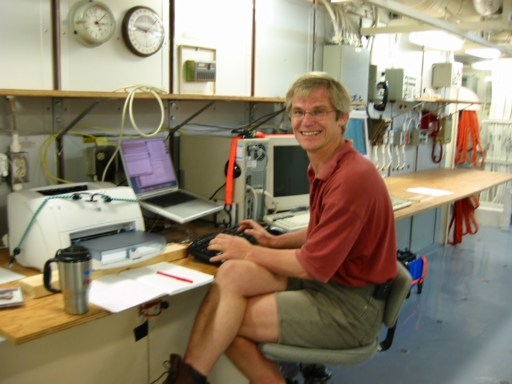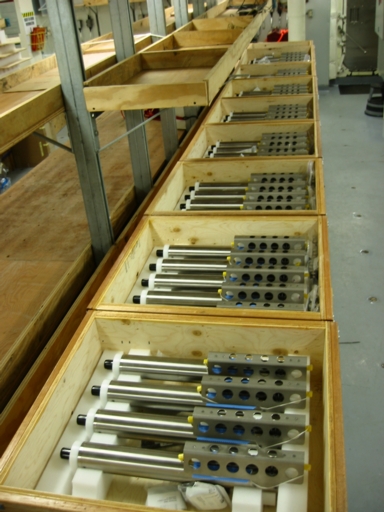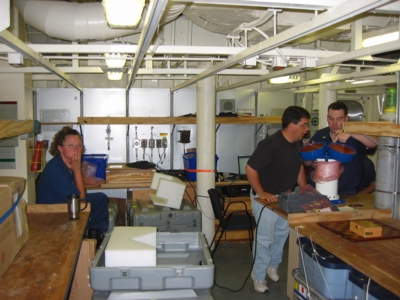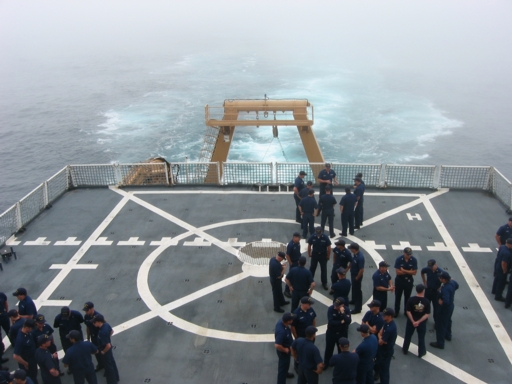| Questions from Delaware |
Tracey from Delaware send me the following questions today. Several crew members ask me similar questions, so I post them today as part of the log. Here are Tracey's questions and my answers:
(1) Why is the research important? Why should the average citizen care about it?
|
 |
The discharge of fresh water from the Arctic into the North-Atlantic is one crucial factor that controls global climate. Another crucial factor changing global climate are us, people driving cars, living the way we do since the industrial revolution. We do not know how we as people change climate nor do we know how nature changes climate on its own. A changing climate will affect all of us in unexpected ways as major cycles in weather patters change. More snow, less snow for the next 10 years; more huricanes, less huricanes for the next 10 years; more draughts, less draughts for the next 10 years.
|
|
(2) What, specifically are you and your team contributing to the multi-institutional effort?
|
 |
The University of Delaware received over $2,000,000 from the National Science Foundation for this 5-year project. UDel provides capital equippment matching funds exceeding $500,000. These funds facilitates installation of an observing system for the next 3.5 years. UDel will instrument Nares Strait between northern Greenland and Ellesmere Islands to measure (a) currents from the bottom to the surface, (b) temperature and salinity from the bottom to the surface, and (c) sea level at 8 different location each. These 24 bottom-mounted moorings are the core component of this study. An additional two moorings measure the ice motion and ice thickness.
This expedition will deploy all these instruments that we will recover through the ice in the spring of 2005 and redeploy them until final recovery in 2007. A second major objective of the present expedition is to aquire velocity data from the surface to the bottom as the ship sails along a pre-determined path. The two hull-mounted acoustic Doppler Current profiles collect data every few seconds 24 hours/day 7 days/week. The UDel team has primary responsibility for this instrument and the data analysis. UDel personel will also lead all data management and processing of the science party during this expedition as well as the maintenance of the web-pages that will be udated at least daily by a Pennsylvania High School and an Oregon Elementary School teachers.
|
|
(3) What have been the most significant developments of the cruise so far on a scientific and/or personal level?
|
 |
The USCGC Healy is, I believe, the only icebreaker in the world with operational instruments that profile both the velocity field and the bottom topography every few seconds around the clock. This ship is a modern research vessel that is dedicated to do oceanography. The UDel advance team (Andreas Muenchow and David Huntley) boarded the ship on a transit leg from Curacao to St. John's Newfoundland to prepare instruments, to test instrument performance, and to generally adjust to the life and procedures on a military vessel. Hence we have not started doing science just yet.
On a personal level, I am impressed on how well the ship is configured to support science. The space to stage experiments both on the deck and inside in laboratories, the computer networks, the care with which instruments are maintained, this is a most pleasant change for me after working for years on less well equipped and handled ships-of-opportunities. The people that make all this happen are all dedicated, eager, and knowledgeable. Without the electrical, mechanical, and science technicians and engineers few of the science support systems and instruments would work as well as they do.
|
|
(4) What has been the most difficult adjustment at sea? |
 |
Well, it's very difficult for me to socialize and relax. There are just to many exciting things going on. Data on oceanography streams in in real time from all direction. It's all accessible to me over a local network. And I can see the instruments, and I can see the ocean from which these measurements are taken. I'm like a data junkie who has been given an overdose. It will be very difficult (but very necessary) to slow down and pace myself. I hate to miss a minute and sleep or waste time. One day at sea accomplishes as much as 2 months in the office.
|
Thank you for your questions that I tried to answer in a hurry. Hope they are useful and I hope you do not mind if I post them on our web-page today. I will try my best to answer any questions that I will receive at:
amuenchow@sci.uscoastguard.net
|
